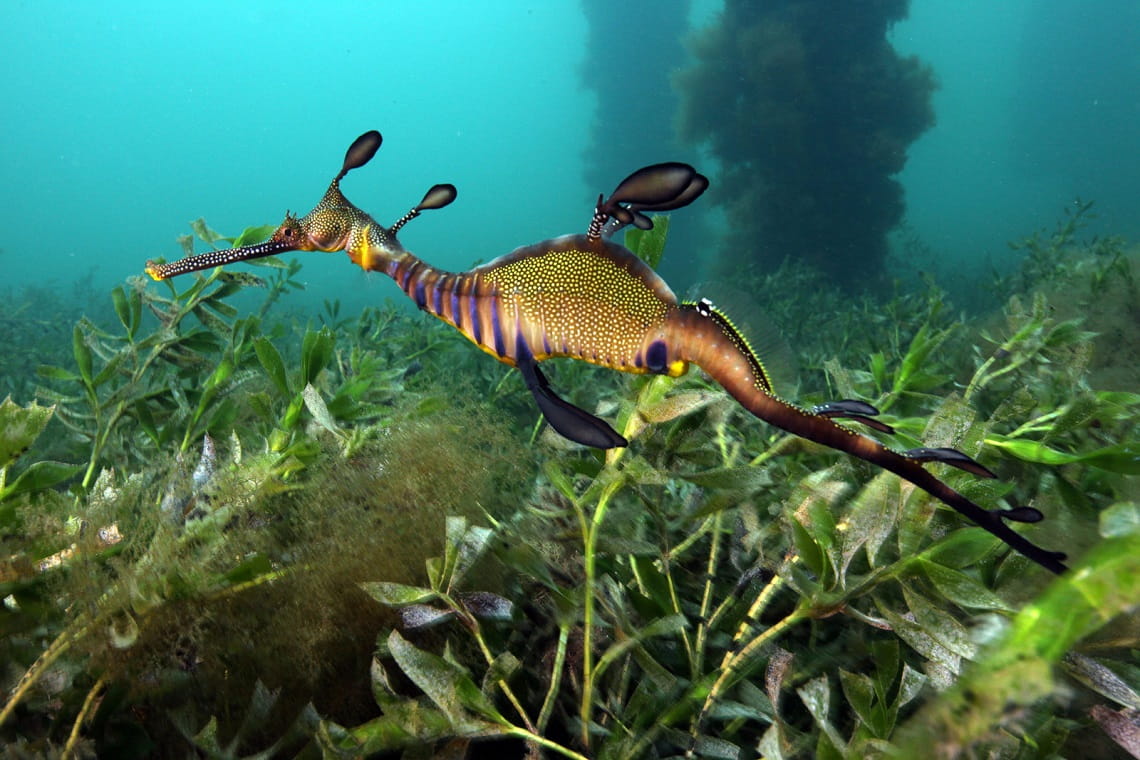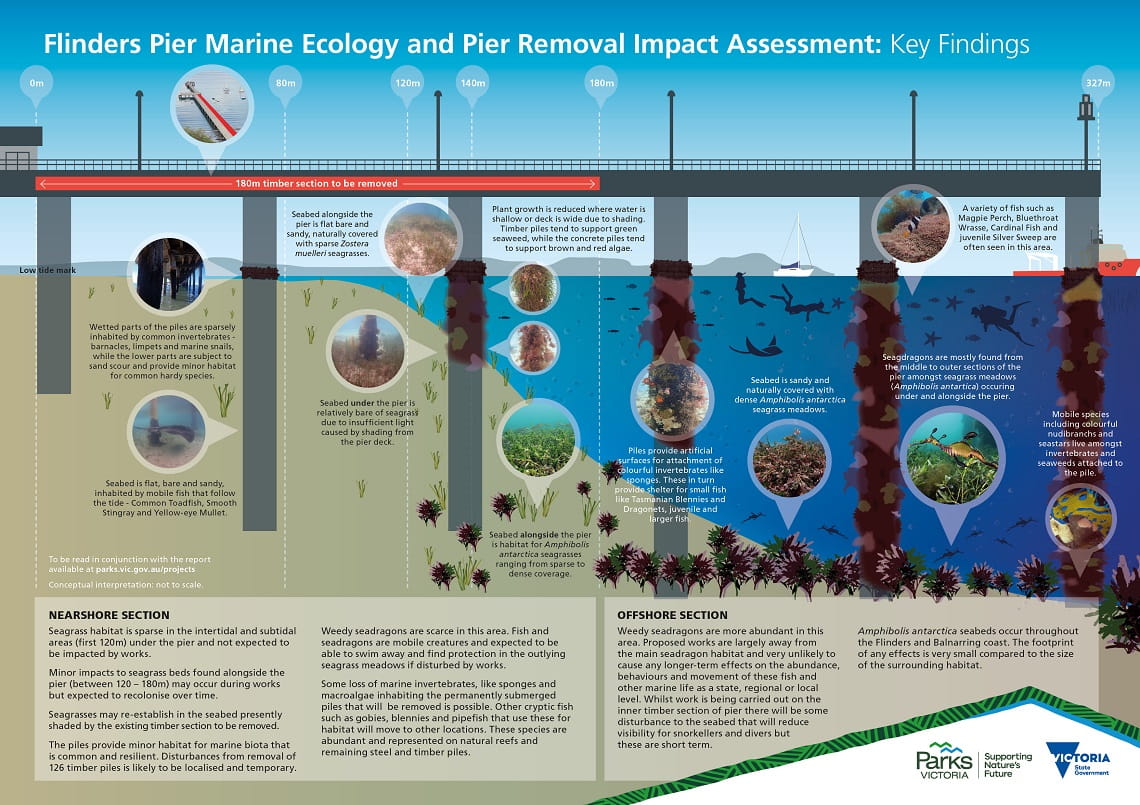Newly released findings from an independent scientific study have revealed that the potential impacts to the local Weedy Seadragon population from the proposed Flinders Pier works would be localised and temporary.
The report, prepared by environmental marine biology consultants CEE Pty Ltd, examined the marine ecosystem at the pier, mapping habitat and marine life, and identifying potential impacts from removing the unsafe 180-metre section of timber pier.
In a key finding, the report identifies removal of the inshore timber piles and deck is unlikely to impact the population of Weedy Seadragons (Phyllopteryx taeniolatus) at a state, regional or local level and that any minor, temporary disturbances can be managed.
The report has found the outer section of pier - which will remain in place - provides the most valuable marine habitat for seadragons, including extensive beds of Sea Nymph seagrass (Amphibolis antartica). This habitat is widespread along the coast between Flinders and Balnarring but also occurs alongside the pier, and to a much lesser extent due to shading, under the pier from the middle to outer sections.
Seagrass is highly suitable habitat for seadragons, providing shelter from turbulence and predators and containing high numbers of the small crustaceans they eat. However, with work planned for the inner section of the pier away from the main Weedy Seadragon habitat, the effect on the abundance, behaviour and movement of this species is expected to be negligible.
A Weedy Seadragon at Flinders Pier. Credit: Parks Victoria
The report explains how the characteristics of the marine ecosystem differ between the inshore and deeper waters due to Western Port's dynamic tidal environment.
The inshore flat sandy seabed and piles provide a habitat for resilient and common marine life. Therefore, any impacts to the seabed found alongside the middle section of the pier due to nearby works are expected to be minor, and the biota will recolonise over time.
Funding to remove a dangerous 180-metre inner timber section of Flinders Pier comes from the Victorian Government's $24 million Piers and Jetties economic stimulus package.
The ecological assessment will be considered alongside a heritage impact assessment commissioned by Parks Victoria and a third-party Victorian Heritage Register nomination underway through Heritage Victoria before any decision on the pier's future is made.
The Flinders Pier Marine Ecology and Pier Removal Impact Assessment Report can be viewed at www.parks.vic.gov.au/projects.
An infographic summarising the findings of the Flinders Pier Marine Ecology and Pier Removal Impact Assessment Report. Credit: Parks Victoria








